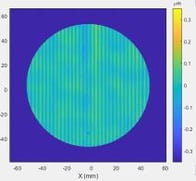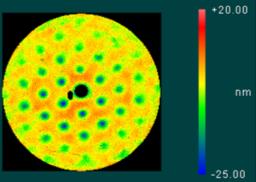Technical Paper
Force responsive robotic controlled figuring and smoothing of lightweight freeform mirrors
Jennifer Coniglio, Matt Eisner, Dan Brooks, Josh Beck and Jessica DeGroote Nelson
What's it about?
Optical fabrication of freeform lightweight mirrors often results in mid-spatial frequency (MSF) and/or surface quilting surface errors. To minimize these errors, two force responsive robotic smoothing methods are incorporated into the freeform fabrication process.
1. INTRODUCTION
Freeform optics that utilize light-weighted backing can offer solutions for space-born advanced sensing systems among other applications that are sensitive to system weight restrictions. Challenges in current fabrication methods including precision, turnaround time, weight (areal density), and cost can be improved to increase utilization of freeforms for these applications. Freeform optics and aspheres without rotational symmetry, such as elliptical and hyperbolic shapes found in some telescopes require sub-aperture polishing and generation. These methodologies frequently create mid-spatial frequency (MSF) errors, or “ripples,” as the tool size that allows for changes in curvature of the part necessitates multiple passes to remove material [1] [2] (Figure Figure 1a). Figure 1b shows an example of light weighting and the problematic print-through, or quilting, errors due to generation, polishing, and smoothing pressures applied to surfaces of different thicknesses [3]. Unfortunately, both print-through [4] and MSF errors [5] can negatively impact the point spread function (PSF) of an optic, thereby degrading the overall efficacy of the system.
a).  b).
b). 
Figure 1: a.) MSF errors imparted by subaperture polishing on a robotic platform as viewed with deflectometry (LEFT) and b.) print-through error seen on a light-weighted coupon that was conventionally polished, as viewed via interferometry (RIGHT)
Read the Full Paper
This paper is posted on the Optica Publishing Group site, clicking the button will direct you there.

